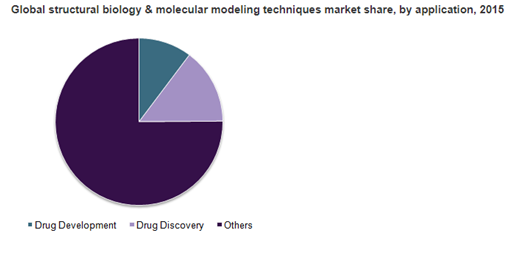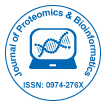Theme: A spectrum of innovative approaches and solutions to Structural Biology
Renowned Speakers
Structural Biology Congress 2018
Welcome Message
Structural Biology Congress 2018

Dear Colleagues, Scientists and Friends,
I am delighted to welcome you to the 12th International Conference on Structural and Molecular Biology here in Osaka, Japan. Having seen the program of lectures planned for these next few days I know that you are going to have an inspiring time. I also hope that you will make the most of this meeting and interact with scientists across disciplines and at different stages in their career. In this way you will gain maximum benefit from this great opportunity. During the hectic schedule I hope you will also find time to enjoy also the beauty of your surroundings – Osaka is truly an inspirational venue for a meeting. I wish you a very enjoyable conference in this beautiful city.
Dame Carol Robinson
Professor
Physical and Theoretical Chemistry Laboratory
University of Oxford
South Parks Road
Oxford OX1 3QZ
Sessions/Tracks
Conference Series llc LTD gladly welcomes all the participants from all over the world to join the upcoming prestigious event “12th International Conference on Structural and Molecular Biology" to be held during May 14-15, 2018 at Osaka, Japan. The conference includes Keynote presentations, Oral/Poster presentations and Exhibitions.
Structural Biology 2018 mainly emphasizes on methods such as X-ray diffraction, NMR, electron microscopy, computational approaches, cell signaling and cancer research.
Track 1: Structural Bioinformatics and Proteomics
Structural bioinformatics is a structural biology studies which characterizes biomolecules and their arrangement at the molecular and atomic level. Structural bioinformatics is related to the prediction and analysis of the three dimensional structure of macromolecules such as protein, DNA, RNA. It deals with the generalization of overall folds, interactions, local motifs, structure and functional relationship and molecular folding of experimentally solved structures and computationally predicted structures. It provides an invaluable structural context for conservation and mechanistic analysis leading to functional insight. Lots of structural data is becoming valuable and available and structural proteomics is the process of the high-throughput characterization of the three-dimensional structures of biological macromolecules.
Proteomics is basically a large-scale study of proteins. Proteins are vital parts of living organisms, with many functions. This is mainly achieved using different technologies such as X-ray crystallography and NMR spectroscopy.
Relevant Conferences
International Conference on Computational Biology and Bioinformatics, Paris on Aug 28-29, 2017; International Conference on Computational Biology and Complex Systems, Venice on Aug 14-15, 2017; 3rd International Conference on Lipid Science & Technology December 11-13, 2017 Rome, Italy; The 31st Symposium of The Protein Society, July 24-27, 2017 Montreal, Canada; 19th International Conference on Protein and Proteomics November 24 - 25, 2017, Dubai, UAE; 22nd Annual Lorne Proteomics Symposium, February 2-5,2017, Victoria , Australia.
Track 2: Structural Biology and Single Molecules
Single-molecule studies may be contrasted with measurements on an ensemble or bulk collection of molecules, where the individual behavior of molecules cannot be distinguished and only average characteristics can be measured. To study the individual biomolecules, biophysical methods have been developed. Thus it enables the biologist to monitor all the biological process and helps in understanding the underlying mechanism. Further, removal of ensemble average and fluctuations catalytic properties can be elucidated. Advancements like applying force on the biomolecules helps to obtain important information like how proteins couples function to structure. Thus with a clearer understanding of the individual components that comprise integrated living systems, researchers are better able to grasp the many complex interactions between gene products or molecules that cause disease.
Relevant Conferences:
International Conference on Applications of Molecular Biology, Vancouver on Aug 07-08, 2017, International Conference on Biochemistry, Bioinformatics and Molecular Biology, Dubai on Oct 16-17, 2017, International Conference on Computational Molecular Biology and Bioinformatics, Amsterdam on May 14-15, 2020, International Conference on Ecology, Metabolism and Molecular Biology, Osaka on Sep 13-14, 2018, International Conference on Computational and Structural Biotechnology, Amsterdam on Aug 07-08, 2017.
Track-3 Molecular Modeling and Dynamics
Molecular modeling is a scientific field of simulation of molecular systems. It represents the molecular structure numerically and simulating its behavior with the equations of quantum physics. Basically, it provides a tool to visualize 3D structure and to analyze the properties and behavior of the molecules on atomic level. It is widely used in drug designing to identify new lead compounds.
Relevant Conferences
International Conference on Computational Biology and Bioinformatics, Paris on Aug 28-29, 2017; International Conference on Computational Biology and Complex Systems, Venice on Aug 14-15, 2017; International Conference on Computational Biology, Biostatistics and Bioinformatics on Aug 28-29; New York on Aug 07-08, 2017; International Conference on Computational Intelligence Methods for Bioinformatics and Biostatistics, New York on Aug 07-08, 2017; International Conference on Bioinformatics, Genomics and Proteomics, Venice on Jul 20-21, 2017.
Track-4 3D Structure Determination
The arrangement of chemical bonds between atoms in a molecule specifically which atoms are chemically bonded to what other atoms with what kind of chemical bond, together with any information on the geometric shape of the molecule needed to uniquely identify the type of molecule. Also, various functions in the biological system depend on the structure of proteins. The dynamics of protein can be scrutinized mainly by determining the structure and function. Protein-protein interaction, protein interaction with other molecules, catalysis of enzymes and folding and misfolding that are associated with the diseases can be studied through structure determination. It is a procedure by which three dimensional atomic co coordinates are solved by analytical techniques. In crystallography, it refers to elaboration of three dimensional positional coordinates. The most common techniques used in structure determination are X-ray crystallography, NMR spectroscopy, electron microscopy and molecular modeling. Very often scientists use them to study the "native states" of biomolecules.
Relevant Conferences
Revolutions in Structural Biology: EMBL Heidelberg, Germany on 16 - 17 Nov 2017; 9th International Conference on Structural Biology, Zurich, Switzerland on September 18-19, 2017; 3rd International Conference on Lipid Science & Technology December 11-13, 2017 Rome, Italy; The 31st Symposium of The Protein Society, July 24-27, 2017 Montreal, Canada; International Conference on Intelligent Systems for Computational and Molecular Biology, Paris Jul 20-21, 2017; International Conference on Applications of Molecular Biology, Vancouver Aug 07-08, 2017; 22nd Annual Lorne Proteomics Symposium, February 2-5,2017, Victoria , Australia.
Track-5 Computational Approaches in Structural Biology
Computational Biology includes most of the aspects bioinformatics. It is the science of using biological data to develop algorithms or models to understand among various biological systems and relationships. There are approximately more than 3.3 million sequences without structure. This gap in the structural knowledge can be bridged by computation. Computational biology has become an important part of developing emerging technologies for the field of biology. Identification of suitable template of the related protein family plays a major role. The most common approaches in computational biology are ab-initio modeling, homology modeling and threading method. Among these approaches, genetic algorithm is found to be a promising co-operative computational method to solve the structure problem in reasonable time.
Relevant Conferences
International Conference on Intelligent Systems for Computational and Molecular Biology, Paris on July 20-21, 2017; International Conference on Applications of Molecular Biology, Vancouver on Aug 07-08, 2017; The 31st Symposium of The Protein Society, July 24-27, 2017 Montreal, Canada; The 13th PEGS Boston May 1-5, 2017, Seaport World Trade Center; ICPP 2017 : 19th International Conference on Protein and Proteomics, November 24 - 25, 2017, Dubai, UAE; 22nd Annual Lorne Proteomics Symposium, February 2-5,2017, Victoria , Australia.
Track 6: Structural Molecular Biology
Structural molecular biology illuminates the biochemical structures of all living systems at the atomic and molecular level. It also helps to understand the interaction between these components at a macroscopic level. This understanding helps in various fields like biotechnology, forensics and drug discovery.
Structural molecular biology comprehends the areas of science devoted to a detailed understanding of the fundamental molecular and biochemical components of living systems and of how these components interact in an organism.
Relevant Conferences
2nd International Conference on Nucleic Acids, Molecular Biology & Biologics , August 31-September 01, 2017 Philadelphia, USA; 9th International Conference on Bioinformatics October 23-24, 2017 Paris, France; 9th International Conference and Expo on Proteomics October 23-25, 2017 Paris, France; 3rd International Conference on Lipid Science & Technology December 11-13, 2017 Rome, Italy; The 31st Symposium of The Protein Society, July 24-27, 2017 Montreal, Canada.; The 13th PEGS Boston May 1-5, 2017, Seaport World Trade Center; ICPP 2017 : 19th International Conference on Protein and Proteomics November 24 - 25, 2017, Dubai, UAE; 22nd Annual Lorne Proteomics Symposium, February 2-5,2017, Victoria , Australia.
Track-7: Structural Virology
Viruses are small self-replicating organisms. Even though individually viruses are simple, as a group they are exceptionally diverse in both replication strategies and structures. To study the life cycle of human virus, we use various technologies like X-ray crystallography, cryo-electron microscopy. We investigate macromolecular interactions associated with virus cell entry, genome replication, assembly, and maturation. Viruses are very simple enough that we can aspire to understand their biology at a molecular level. Our efforts are directed towards using structural information for the development of anti-viral drugs and vaccines.
Relevant Conferences:
International Conference on Functional Genomics and Translational Biology, Bangkok on Oct 26-27, 2017, International Conference on Functional Genomics in Biotechnology, London on Oct 19-20, 2017, ICAMB 2017 International Conference on Applications of Molecular Biotechnology, Osaka, Japan Conference, International Conference on Applications of Bioinformatics, Osaka, Japan Oct 19-20, 2017.
Track-8 Hybrid Approaches for Structure Prediction
Structural bioinformatics is a highly cost efficient solution for accelerated determination of the three dimensional structures of proteins. Purely computational prediction methods, such as advanced fold recognition, composite approaches, ab initio fragment assembly, and molecular docking are routinely applied today. Hybrid method combines information from a varied set of experimental and computational sources. Hybrid approaches helps to overcome these limitations by incorporating limited experimental measurements, reliable structural models can be computed and unlikely predictions eliminated. Hybrid approaches take advantage of data derived from a range of very different biochemical and biophysical methods.
Relevant Conferences
9th International Conference on Bioinformatics October 23-24, 2017 Paris, France; 9th International Conference and Expo on Proteomics October 23-25, 2017 Paris, France; 3rd International Conference on Lipid Science & Technology December 11-13, 2017 Rome, Italy; The 31st Symposium of The Protein Society, July 24-27, 2017 Montreal, Canada.; The 13th PEGS Boston May 1-5, 2017, Seaport World Trade Center; ICPP 2017 : 19th International Conference on Protein and Proteomics November 24 - 25, 2017, Dubai, UAE; 22nd Annual Lorne Proteomics Symposium, February 2-5,2017, Victoria , Australia.
Track-9 Sequencing
Sequencing is widely used to study how different organisms are related and how they are evolved. It is also used to study genomes and the proteins that they encode. With this sequencing information, changes in genes, disease association and drug targets are identified. It is widely used in medicinal field as a form of genetic testing. Vast amount of data is available as DNA sequencing is done on large scale. By August 2005, hundred billion bases were collected which represented 165,000 different organisms. As this data is numerous, need for new methods to analyze the sequences was critical. Thus Bioinformatics plays a major role in collecting, storing and analyzing these data with different tools.
Relevant Conferences
2nd International Conference on Nucleic Acids, Molecular Biology & Biologics , August 31-September 01, 2017 Philadelphia, USA; International Conference on Computational and Structural Biotechnology, Amsterdam on Aug 07-08, 2017; International Conference on Computational Biology and Bioinformatics, Paris on Aug 28-29, 2017; The 31st Symposium of The Protein Society, July 24-27, 2017 Montreal, Canada; The 13th PEGS Boston May 1-5, 2017, Seaport World Trade Center; 19th International Conference on Protein and Proteomics November 24 - 25, 2017, Dubai, UAE; 22nd Annual Lorne Proteomics Symposium, February 2-5,2017, Victoria , Australia.
Track-10 Drug Designing
Drug designing is an inventive process of finding new medication based on the target knowledge. A drug is commonly a small compound which produces a therapeutic effect. There are different methods of drug designing. Designing a drug based on the three dimensional structure and computational techniques are known as structure based drug design and computer aided drug design respectively. There are various stages involved in computer aided drug design such as hit identification, hit to lead optimization and lead optimization. In structure based drug design, the structure is obtained either through x-ray crystallography or NMR spectroscopy. Ligand-based drug design depends on the knowledge of molecules that bind to the biological target of our interest. Correlation between calculated and theoretical can be derived and this QSAR relationship is used to derive analogs.
Relevant Conferences
9th International Conference on Bioinformatics October 23-24, 2017 Paris, France; 9th International Conference and Expo on Proteomics October 23-25, 2017 Paris, France; 3rd International Conference on Lipid Science & Technology December 11-13, 2017 Rome, Italy; The 31st Symposium of The Protein Society, July 24-27, 2017 Montreal, Canada.; The 13th PEGS Boston May 1-5, 2017, Seaport World Trade Center; ICPP 2017 : 19th International Conference on Protein and Proteomics November 24 - 25, 2017, Dubai, UAE; 22nd Annual Lorne Proteomics Symposium, February 2-5,2017, Victoria , Australia.
Track-11 Signaling Biology
Cells consist of proteins called receptors which bind to signaling molecule. They in turn initiate a physiological response and also it governs the cellular activities and coordination. It controls gene expression which is vital for cells to function properly. Also, cell signaling network helps to understand how it responds to the environment.
Relevant Conferences
International Conference on Functional Genomics and Proteomics, Paris on Oct 19-20, 2017; International Conference on Functional Genomics and Systems Biology, Barcelona on Oct 30-31, 2017; International Conference on Functional Genomics and Translational Biology, Bangkok on Oct 26-27; The 31st Symposium of The Protein Society, July 24-27, 2017 Montreal, Canada; The 13th PEGS Boston May 1-5, 2017, Seaport World Trade Center; 19th International Conference on Protein and Proteomics November 24 - 25, 2017, Dubai, UAE; 22nd Annual Lorne Proteomics Symposium, February 2-5,2017, Victoria , Australia
Track-12 Frontiers in Structural Biology
The main purpose of structural biologist is to determine the structure of the protein and also drug designing such as identification of hits, leads and candidate drugs. Protein plays vital role in all biochemical reactions that occurs in the body. They acts as carriers and also provides strength and structure. Determining structure of a protein has always been tedious. Innovative ideas are being progressed in different fields of structural biology.
Relevant Conferences
2nd International Conference on Nucleic Acids, Molecular Biology & Biologics , August 31-September 01, 2017 Philadelphia, USA; 9th International Conference on Bioinformatics October 23-24, 2017 Paris, France; 9th International Conference and Expo on Proteomics October 23-25, 2017 Paris, France; 3rd International Conference on Lipid Science & Technology December 11-13, 2017 Rome, Italy; The 31st Symposium of The Protein Society, July 24-27, 2017 Montreal, Canada.; The 13th PEGS Boston May 1-5, 2017, Seaport World Trade Center; ICPP 2017 : 19th International Conference on Protein and Proteomics November 24 - 25, 2017, Dubai, UAE; 22nd Annual Lorne Proteomics Symposium, February 2-5,2017, Victoria , Australia.
Track-13 Recent Advances in Structural Biology
Structural biology is the oldest of all biological disciplines and is still an expanding field. The main goal of structural biology is to achieve a complete understanding about the cellular structure in relation to the molecular mechanisms involved in the cellular processes. New insights are currently emerging into the macromolecular structures which involves in the signal transduction. It encompasses a full range of relationship from tissues to molecules. Structural biology has a very broad range and is highly diversified.
Relevant Conferences
9th International Conference on Bioinformatics October 23-24, 2017 Paris, France; 9th International Conference and Expo on Proteomics October 23-25, 2017 Paris, France; 3rd International Conference on Lipid Science & Technology December 11-13, 2017 Rome, Italy; The 31st Symposium of The Protein Society, July 24-27, 2017 Montreal, Canada.; The 13th PEGS Boston May 1-5, 2017, Seaport World Trade Center; ICPP 2017 : 19th International Conference on Protein and Proteomics November 24 - 25, 2017, Dubai, UAE; 22nd Annual Lorne Proteomics Symposium, February 2-5,2017, Victoria , Australia.
Track-14 Structural Biology in Cancer Research
One of the major areas of interest is cancer research. Cancer is defined as the abnormal growth of cells. There are numerous types of cancer that affects people of all age. Structural biology combines with molecular biology in order to design novel drugs mainly to cure cancer. The biologists carry out research in order to understand the biomolecules, identify different drug targets and improvise cancer therapies
Relevant Conferences
International Conference on Computational Biology and Bioinformatics, Paris on Aug 28-29, 2017; International Conference on Computational Biology and Complex Systems, Venice on Aug 14-15, 2017; 3rd International Conference on Lipid Science & Technology December 11-13, 2017 Rome, Italy; The 31st Symposium of The Protein Society, July 24-27, 2017 Montreal, Canada; 19th International Conference on Protein and Proteomics November 24 - 25, 2017, Dubai, UAE; 22nd Annual Lorne Proteomics Symposium, February 2-5,2017, Victoria , Australia.
Track-15 Structural Biology Complexity Arenas
The main aim of structural biology is to understand the biomolecules at the atomic level. There arise complexities in protein structure prediction, function prediction, misfoldings and understanding the dynamics and interactions. As they are solved on large scale, a gap forms between the structure data and the sequence data. Bridging this gap is one of the important tasks. Some of the complex areas are signaling proteins, protein folding and intrinsically disordered proteins.
Relevant Conferences
International Conference on Functional Genomics and Metabolism, Tokyo on Oct 11-12, 2017; International Conference on Functional Genomics and Proteomics, Paris on Oct 19-20, 2017; International Conference on Functional Genomics and Systems Biology, Barcelona on Oct 30-31, 2017; International Conference on Functional Genomics and Translational Biology, Bangkok on Oct 26-27; 2017; International Conference on Functional Genomics in Biotechnology, London on Oct 19-20, 2017.
Conference Series llc LTD welcomes you to attend the 12th International Conference on Structural Biology during May 14-15, 2018 in Osaka, Japan. This is an excellent opportunity for the delegates from Universities and Institutes to interact with the world class Scientists. The main theme of the conference is “A spectrum of innovative approaches and solutions to structural biology”.
Structural Biology 2018 will be a global platform for sharing information and ability from both scientific and industrial group. The meeting goes for uniting the academicians, scientists, instructors, business pioneers, investors and young researchers to a global stage where they can showcase their novel research and contributions in the field of structural biology and biophysics.
We are sure Structural Biology 2018 will be an incredible open door for the global group to trade thoughts and add to a typical vision for future research and prompts collaboration among researchers taking an interest.
Our Conference will provide a perfect platform addressing:
Laudable talks by the top-notch of the global scientific community
Sterling workshop sessions
Remarkable Awards and Global Recognition to meritorious Researchers
Global Networking with 50+ Countries
Novel Techniques to Benefit Your Research
Global Business and Networking Opportunities
Exquisite Platform for showcasing your products and International Sponsorship
Summary:
Structural biology is the study of the 3D structure of biologically important molecules and macromolecules such as proteins, nucleic acids and carbohydrates. The 3D structures of these molecules generally define their function. Biomolecules are too small to see in detail even with the most advanced light microscopes. The methods that structural biologists use to determine their structures generally involve measurements on vast numbers of identical molecules at the same time. Structural biology 2018 deals with topics like experimental and computational methods of biomolecule structure prediction, structural bioinformatics, membrane proteins, molecular modeling simulation and drug designing.

Importance & Scope:
Structural biology has been extensively used in the pharmaceutical industries for drug designing and drug discovery. Pharmaceutical industries are expected to grow at a high rate in coming years, which is expected to boost the growth of the market.
Why Japan?
Japan’s ability to conduct independent research is a decisive factor in boosting nation’s competitiveness. A place for conducting good research for Structural biology with having institutes like Okinawa Institute of Science and Technology, NARA Institute of Science and Technology, Advanced Medical Research Centers, National Institutes for Basic Biology and many more centers will come in handy. With 5% of GNP, Japan is unique in their science and the availability of raw materials to industrial companies offers them excellent research opportunities.
Global Life Science Market Share by Country

Why to attend?
Meet your target market with recent business reports on structural biology and drug designing making news which manifests the tremendous growth in market value for pharmaceutical industry. Since structural biology focuses on structure determination through X-ray crystallography, NMR, Cryo-EM; computational structure prediction; identification of signaling pathways and drug designing through various bioinformatics software, it would be a great opportunity for companies dealing with analytical instruments and software useful in these fields. Also many upcoming students and researchers can benefit themselves by participating in world class International workshops, symposia during the conference which will be conducted by experts in the respective fields.
Major Structural Biology Related Associations around the Globe:
American Society for Biochemistry and Molecular Biology
Czech Society for Structural Biology
Biophysical Society
American Chemical Society
New England Structural Biology Association
The Protein Society
American Crystallographic Association
International Union of Crystallography
British Crystallographic Association
European Crystallographic Association
Hellenic Crystallographic Association
Bioinformatics society of India
International Society for Computational Biology
South African Crystallographic Society
Australian Society for Biochemistry and Molecular Biology
Australian Society for Biophysics
American Society for Mass Spectrometry
British Biophysical Society
Bioinformatics Italian Society
Mid-South Computational Biology and Bioinformatics Society
Major Structural Biology Related Research Units :
Structural Biology Group, RIKEN
OKINAWA Institute of Science and Technology
Markey Center for Structural Biology
New York Structural Biology Center
Department of Anatomy and Structural Biology, Einstein College
Department of Structural and Cellular Biology - Tulane University
Structural Biology — Penn State University
Chemical and Structural Biology – The Rockfeller University
Center for Structural Biology - University of Illinois at Chicago
Structural Biology Facility - Robert H. Lurie Comprehensive Cancer Center of Northwestern University
Department of Cellular and Structural Biology – UT Health Science Center
UCSF Macromolecular Structure Group
Structural Biology NMR Facility - University of Minnesota
Target Audience:
Directors/Managers & Business Delegates, Director of Laboratories, Universities, Industries, Investigators, Post-Doctoral Fellows, Research and Diagnostic Laboratories, Clinical Fellows, Research Scholars, Students, Biomedical Research companies.
Rise in the number of clinical trials, toxicological studies, and health awareness for nutritional products, rapid growth of structural biology analytical instruments, software and solutions, and use of structural biology as a base for drug designing will propel the growth of pharmaceutical market.

Glance at Market of Structural Biology:
The market is mainly driven by the increasing research funding for structural biology from governments and private investors, growing demand for novel drug design and personalized medicine in the U.S. and Europe, and the increasing need for toxicology testing.

The global structural biology & molecular modeling techniques market accounted for USD 2.52 billion in 2015 and is expected to grow at a CAGR of 18.2% over the coming years. The market is predominantly driven by rise in the prevalence of chronic diseases with acquired drug resistance that exemplifies the need for new and advanced therapeutics. In 2013, North America was the market leader with a share of ~42% of the global market, followed by Europe with a share of ~38%. The presence of a large number of analytical equipment manufacturers has contributed significantly to the North American and European structural biology/drug market. However, the Asia-Pacific region represents a significant growth opportunity for the structural biology/drug market during the forecast period of 2014 to 2019. The APAC market is expected to grow at a CAGR of 23% during the forecast period. The growth in this market is driven by the growing pharmaceutical and biotechnology industries.
The global structural biology market was valued at $565 million in 2014 and is expected to grow at a CAGR of 30% from 2014 to 2019.
Fund Allotment towards Structural Biology Research:
NIH spends approximately $65 million each year for protein structure determination. National Institute on Drug Abuse (NIDA), Prevention Research, has funded $358.1 million in 2015. The state of California, has reportedly invested $10-12 million in direct cancer research annually, while the National Cancer Institute (NCI) within the United States has reportedly spend $4.8 to $5.2 billion per annum on cancer research and treatment development. With the recent request for applications, the NIGMS expects to support three to six large research centers at a level of up to $3 million per center.
Conference Highlights
- 3D Structure Determination
- Computational Approaches in Structural Biology
- Hybrid Approaches for Structure Prediction
- Sequencing
- Structural Molecular Biology
- Signaling Biology
- Molecular Modeling and Dynamics
- Drug Designing
- Frontiers in Structural Biology
- Structural Biology in Cancer Research
- Structural Biology Complexity Arenas
- Recent Advances in Structural Biology
- Structural Virology
- Structural Biology and Single Molecules
- Structural Bioinformatics and Proteomics
To share your views and research, please click here to register for the Conference.
To Collaborate Scientific Professionals around the World
| Conference Date | May 14-15, 2018 | ||
| Sponsors & Exhibitors |
|
||
| Speaker Opportunity Closed | Day 1 | Day 2 | |
| Poster Opportunity Closed | Click Here to View | ||
Useful Links
Special Issues
All accepted abstracts will be published in respective Our International Journals.
- Journal of Proteomics and Bioinformatics: Open access
- Journal of Structural Chemistry and Crystallography Communication
- Journal of cellular and Molecular Biology
Abstracts will be provided with Digital Object Identifier by




















